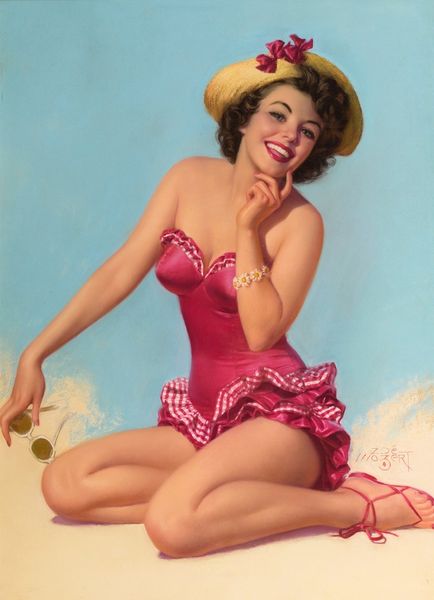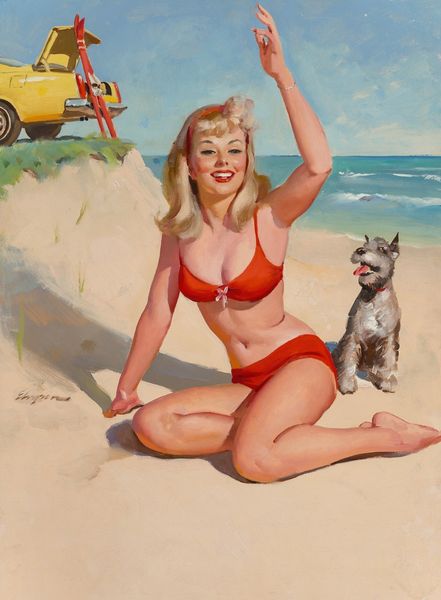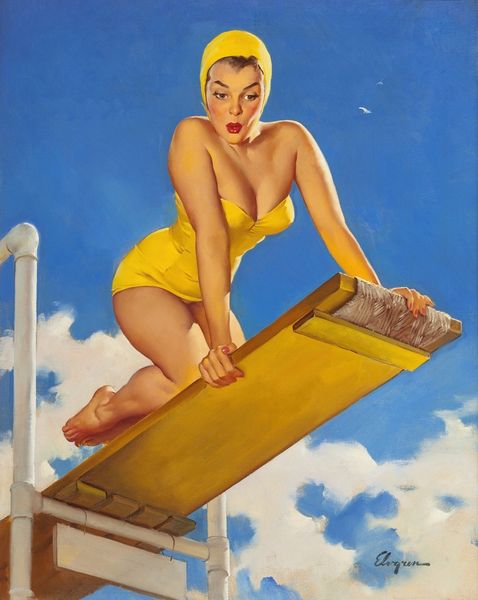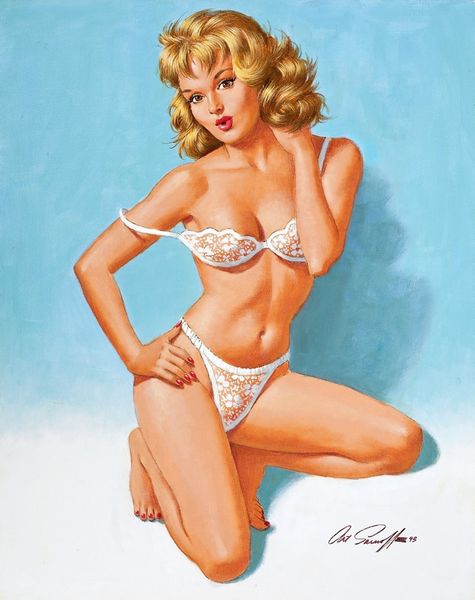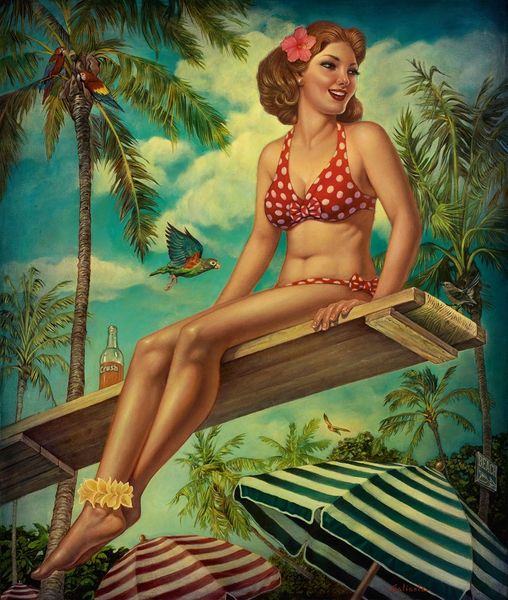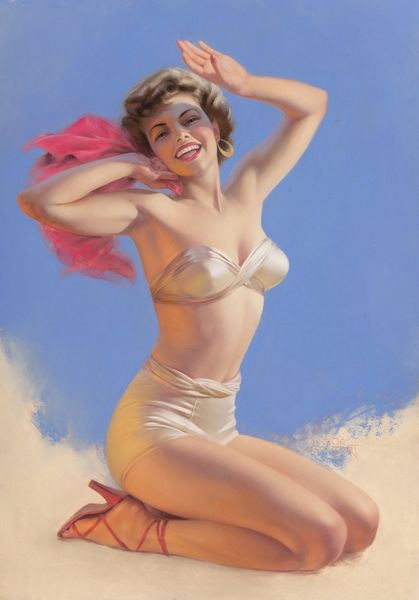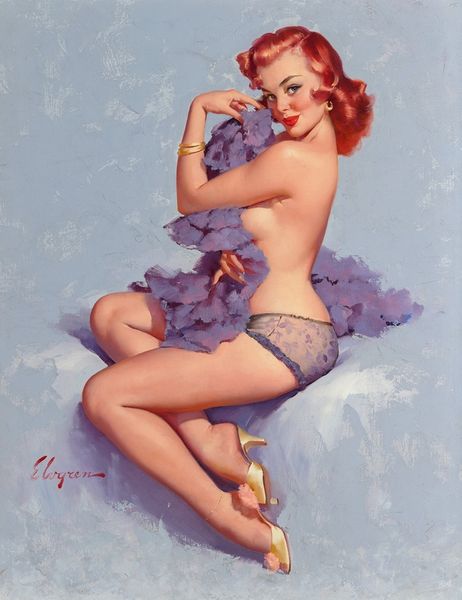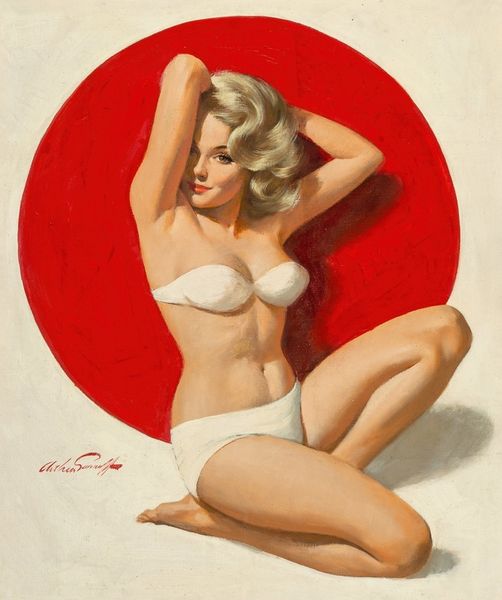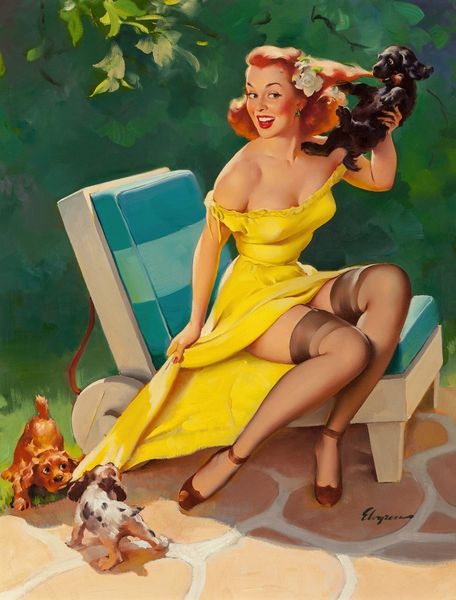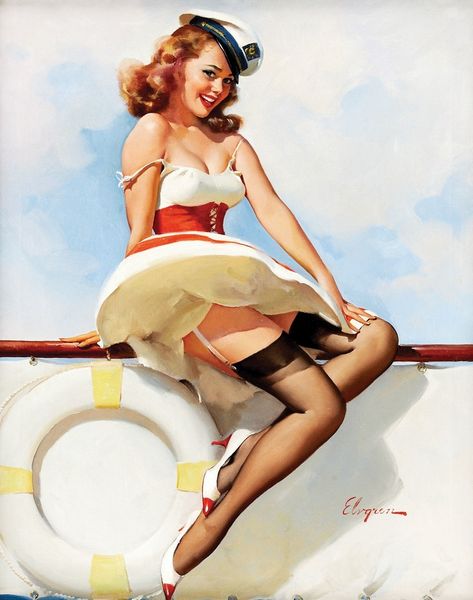
painting, plein-air, oil-paint
#
portrait
#
painting
#
plein-air
#
oil-paint
#
caricature
#
kitsch
#
figuration
#
pop-art
#
genre-painting
#
academic-art
#
nude
#
erotic-art
#
realism
Copyright: Modern Artists: Artvee
Curator: Look at this eye-catching work by Gil Elvgren, dating from around 1960: Pin-Up in Turquoise Bikini. Editor: Wow, that's... pretty standard fare for the era. Almost aggressively cheerful and… airbrushed? It screams conformity packaged as liberation. Curator: Indeed. Elvgren was a master of the pin-up genre, painting images that were hugely popular in calendars and advertisements. He captured a specific fantasy, didn't he? Consider the materials, the glossy oil paint carefully applied—how does that physical object reinforce the image's idealized message? Editor: The airbrushed effect, definitely. It creates a sense of the unreal, like plastic or mass production. It disconnects her from anything human. And that pose—totally engineered. Is she meant to be inviting? Curator: The image absolutely hinges on constructed desire. Think about the social and cultural climate of the 1960s— the sexual revolution, the rising consumer culture, and advertising. It reveals anxieties as much as aspirations. Elvgren wasn’t creating art in a vacuum. Editor: So it's about selling something. That's what's beneath the sun-kissed skin – using sexuality as a lubricant for consumption. Curator: Precisely. What does the widespread dissemination of these images, their almost mundane presence in everyday life, tell us about the roles expected of women? It’s an example of how the visual language perpetuates societal norms or ideals around gender and sexuality. Editor: And if we look at it in terms of pure production, where were these images consumed? Calendars hanging in auto shops, things like that? Gritty environments idealizing a hyper-feminine figure as some kind of aspirational...prize? It is like high-gloss meeting a machine shop! Curator: The image, in the format it was often produced – calendars, printed advertisements – reflects a certain idea of availability. The painting itself becomes secondary to its reproducibility and the ease of consumption, as you say, almost interchangeable with a mechanic’s tools or equipment. Editor: Knowing how these were made and consumed adds such an important layer to it. I mean, you start to see it all a factory-line product as much as a painted image. So this isn’t really a celebration; it’s another brick in the wall, maybe. Curator: I’m inclined to agree. It reflects a very specific moment in our social and art history – mass production meets desire and commodification. Editor: Right. So, beyond the turquoise bikini, there’s a bigger, more complex narrative around labor, gender and how they collide in culture. Food for thought!
Comments
No comments
Be the first to comment and join the conversation on the ultimate creative platform.

